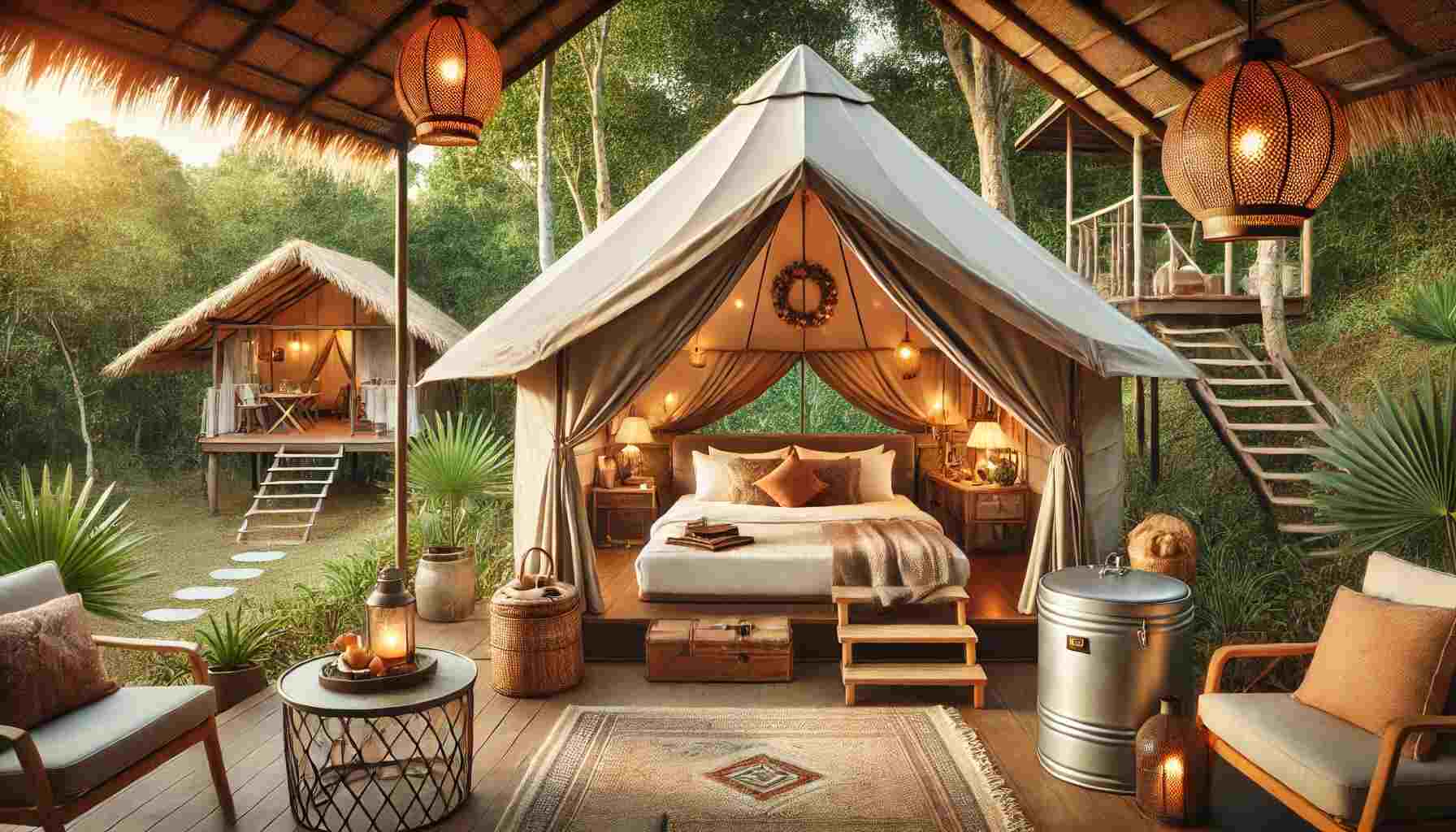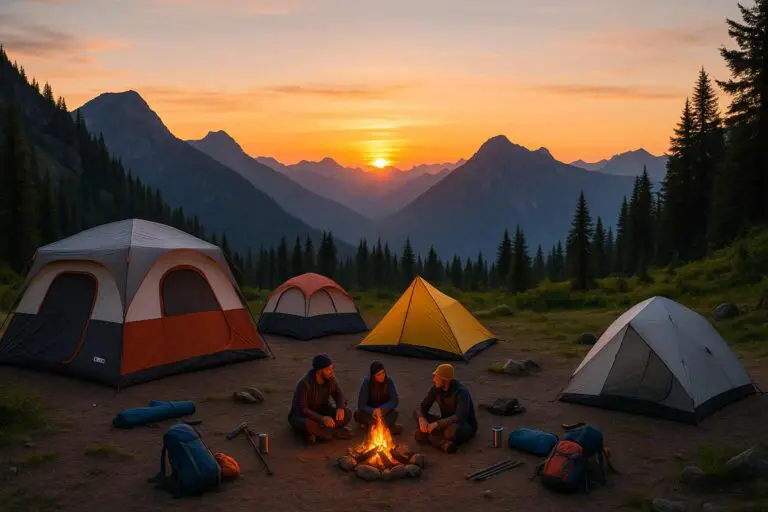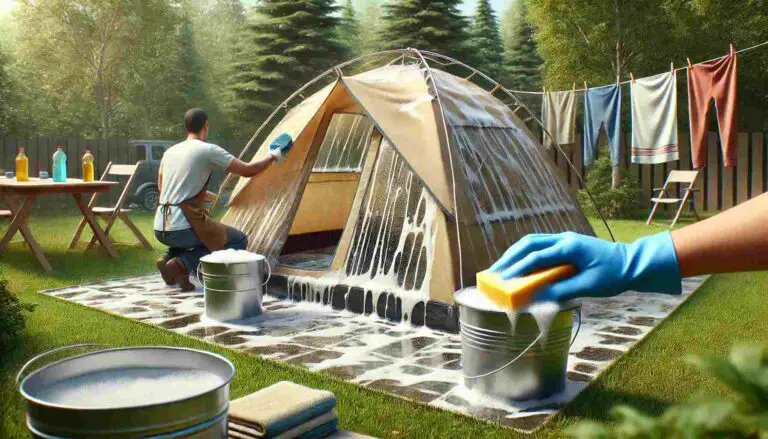A glamping tent is a luxurious alternative to traditional camping, combining “glamorous” and “camping” to offer upscale amenities. These tents include yurts, treehouses, safari tents, and fully furnished cabins with comfortable beds, private bathrooms, and sometimes kitchenettes or fireplaces. This blend of rustic appeal and modern comforts lets you enjoy the outdoors without sacrificing luxury.
This comprehensive guide will explore everything you need to know about glamping tents, from their types and features to the benefits they offer and how to choose the right one for your next outdoor adventure.
What is Glamping?
Before diving into the specifics of glamping tents, it’s important to understand what glamping entails. Glamping is a fusion of “glamour” and “camping,” designed for those who want to experience the great outdoors without sacrificing the comforts of modern life. Unlike traditional camping, which often involves roughing it in basic tents and sleeping bags, glamping provides luxurious accommodations, including comfortable beds, electricity, and even Wi-Fi.
Types of Glamping Tents
There are several types of glamping tents, each offering unique features and benefits. Here are some of the most popular types:
1. Safari Tents
Safari tents are reminiscent of the classic tents used on African safaris. They are spacious, often equipped with wooden floors, and can accommodate full-sized beds, furniture, and even bathrooms. These tents typically have large windows and doors, providing excellent ventilation and views.
2. Yurts
Yurts are circular tents traditionally used by nomadic peoples in Central Asia. Modern yurts are equipped with all the amenities of a luxury hotel room, including insulation, heating, and plumbing. They offer a unique blend of cultural heritage and modern comfort.
3. Bell Tents
Bell tents are conical structures supported by a single central pole. They are easy to set up and offer plenty of space for multiple guests. Bell tents are often used in glamping sites due to their aesthetic appeal and practicality.
4. Tipis
Tipis, also known as teepees, are traditional Native American structures. They are conical and have a unique, rustic charm. Modern tipis used for glamping are often equipped with luxurious interiors and amenities.
5. Dome Tents
Dome tents are geodesic structures made from a network of triangles. They are highly durable and can withstand harsh weather conditions. Dome tents provide a futuristic and stylish glamping experience.
Key Features of Glamping Tents
Glamping tents are designed to offer a luxurious and comfortable camping experience. Here are some key features to look for:
1. Comfortable Bedding
One of the main draws of glamping is the ability to sleep comfortably. Glamping tents often come with full-sized beds, high-quality mattresses, and cozy bedding.
2. Climate Control
To ensure a comfortable stay, many glamping tents are equipped with climate control features such as heating, air conditioning, and insulation. This allows for year-round glamping, regardless of the weather.
3. Furniture and Decor
Glamping tents are often furnished with stylish and functional furniture, including chairs, tables, and storage options. The decor is carefully chosen to create a cozy and inviting atmosphere.
4. Electricity and Lighting
Unlike traditional camping, glamping tents typically have electricity, allowing you to charge devices, use appliances, and enjoy proper lighting. This can be a significant advantage for those who prefer a more civilized camping experience.
5. Private Bathrooms
Many glamping tents come with en-suite bathrooms, complete with running water, toilets, and showers. This eliminates the need to trek to a communal bathroom in the middle of the night.
6. Cooking Facilities
Some glamping tents include fully equipped kitchens or outdoor cooking areas, allowing you to prepare gourmet meals in the wilderness. This can range from basic kitchenettes to elaborate setups with grills and ovens.
Benefits of Glamping Tents
Glamping tents offer numerous benefits that make them an attractive option for outdoor enthusiasts. Here are some of the key advantages:
1. Comfort and Luxury
The primary benefit of glamping tents is the comfort and luxury they provide. You can enjoy the beauty of nature without sacrificing modern conveniences and amenities.
2. Unique Experiences
Glamping tents offer unique and memorable experiences. Whether staying in a safari tent overlooking a savannah or a yurt in the mountains, each glamping experience is distinct.
3. Accessibility
Glamping makes camping accessible to a wider audience. Those who might be hesitant to camp due to the lack of comfort and facilities can now enjoy the great outdoors without these concerns.
4. Eco-Friendly Options
Many glamping sites prioritize sustainability and eco-friendliness. Glamping tents are often made from sustainable materials and designed to minimize environmental impact.
5. Versatility
Glamping tents are versatile and can be used in various settings, from remote wilderness areas to established glamping resorts. This flexibility allows for a wide range of glamping experiences.
Choosing the Right Glamping Tent
Selecting the right glamping tent is crucial to ensuring a pleasant and comfortable experience. Here are some factors to consider when making your choice:
1. Size and Capacity
Consider how many people will be staying in the tent and how much space you need. Glamping tents come in various sizes, from cozy two-person tents to large family-sized options.
2. Location and Climate
Think about where and when you’ll be glamping. Some tents are better suited for specific climates and weather conditions. For example, yurts and dome tents are ideal for colder climates, while bell tents and safari tents work well in warmer regions.
3. Amenities and Features
Determine which amenities and features are most important to you. Do you need a private bathroom, a fully equipped kitchen, or climate control? Make sure the tent you choose meets your specific needs.
4. Budget
Glamping tents can vary significantly in price. Set a budget and look for options that provide the best value for your money. Remember that more luxurious tents will come with a higher price tag.
5. Aesthetic Appeal
Consider the aesthetic appeal of the tent. Glamping is not just about comfort but also about creating a visually pleasing environment. Choose a tent that aligns with your style and preferences.
Popular Glamping Tent Brands and Models
There are several reputable brands and models to consider when shopping for a glamping tent. Here are some popular options:
1. Lotus Belle Tents
Lotus Belle offers beautifully designed bell tents that are spacious, durable, and stylish. They are known for their high-quality materials and attention to detail.
2. CanvasCamp Sibley Tents
CanvasCamp produces a range of bell tents, including the popular Sibley series. These tents are made from heavy-duty canvas and are designed for long-term use.
3. White Duck Outdoors Avalon Bell Tent
The Avalon Bell Tent from White Duck Outdoors is a premium option that offers excellent durability and comfort. It features waterproof canvas, a high ceiling, and multiple windows for ventilation.
4. Dream House Luxury Outdoor Camping Tent
The Dream House Luxury Outdoor Camping Tent is a spacious and well-designed bell tent that offers a comfortable glamping experience. It includes features like a PVC floor, waterproof canvas, and large windows.
5. Teton Sports Sierra Canvas Tent
Teton Sports offers the Sierra Canvas Tent, a versatile and durable option for glamping. It includes a waterproof floor, sturdy poles, and ample interior space.
Tips for Setting Up and Maintaining Your Glamping Tent
To ensure a successful glamping experience, it’s important to set up and maintain your glamping tent properly. Here are some tips to help you get started:
1. Choose the Right Location
Select a flat and dry location for your tent. Avoid areas prone to flooding or with sharp rocks and debris that could damage the tent.
2. Follow the Instructions
Carefully follow the manufacturer’s instructions for setting up your tent. Proper setup is crucial for ensuring stability and comfort.
3. Secure the Tent
Use stakes and guy lines to secure the tent and prevent it from shifting or collapsing in windy conditions. Ensure all connections are tight and secure.
4. Regular Cleaning
Keep your glamping tent clean by regularly sweeping out dirt and debris. Wipe down surfaces with a damp cloth and mild soap as needed.
5. Proper Storage
When not in use, store your tent in a dry and cool location. Avoid storing it in damp or humid conditions, which can lead to mold and mildew.
6. Repair and Maintenance
Inspect your tent regularly for any signs of damage or wear. Repair any tears or holes promptly to prevent further damage.
Glamping Tent Accessories and Enhancements
To enhance your glamping experience, consider adding some accessories and enhancements to your tent:
1. Lighting
Invest in high-quality lighting options such as LED lanterns, string lights, and solar-powered lamps to create a cozy and well-lit environment.
2. Rugs and Carpets
Add comfort and style to your tent with rugs and carpets. They can help insulate the floor and make the interior more inviting.
3. Portable Heaters and Fans
Depending on the climate, portable heaters or fans can help regulate the temperature inside your tent, ensuring a comfortable stay.
4. Outdoor Furniture
Create an outdoor living space with comfortable chairs, tables, and loungers. This allows you to enjoy the surroundings while still having a comfortable place to relax.
5. Cooking Equipment
Enhance your culinary experience with portable grills, stoves, and kitchen utensils. Having the right cooking equipment can make meal preparation enjoyable and convenient.
Glamping Tent FAQs
Here are some frequently asked questions about glamping tents to help you better understand and choose the right option for your needs:
1. Are glamping tents waterproof?
Most glamping tents are made from waterproof materials such as heavy-duty canvas or treated fabrics. However, it’s always a good idea to check the specifications and ensure your tent is properly sealed and protected against rain.
2. Can I use a glamping tent in winter?
Yes, many glamping tents are designed for year-round use and come with insulation and heating options. Yurts, dome tents, and certain bell tents are particularly suitable for winter glamping.
3. How long does it take to set up a glamping tent?
The setup time for a glamping tent can vary depending on the type and size of the tent. On average, it can take anywhere from 30 minutes to a few hours. It’s important to follow the manufacturer’s instructions and have the necessary tools on hand.
4. Can I rent a glamping tent?
Yes, many glamping sites offer tent rentals. This can be a convenient option if you want to experience glamping without the commitment of purchasing your own tent.
5. What should I bring when glamping?
When glamping, it’s essential to bring personal items such as clothing, toiletries, and any specific gear or accessories you might need. Many glamping sites provide basic amenities, but it’s always good to check in advance and pack accordingly.
Conclusion
Glamping tents offer a unique and luxurious way to experience the great outdoors. Whether you’re looking for a romantic getaway, a family vacation, or an adventure with friends, glamping provides the perfect blend of comfort and nature.
To enhance your glamping experience, consider the popular glamping tent brands and models mentioned in this guide. Additionally, follow the tips for setting up and maintaining your tent to keep it in top condition. With the right glamping tent and accessories, you’ll be ready to embark on a glamorous camping adventure that you’ll never forget.
Happy glamping!



